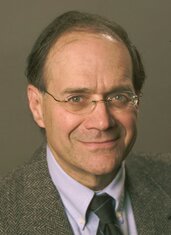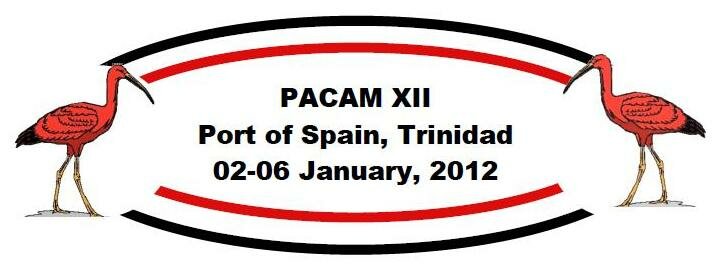|
|
News
Submission of mini-symposia proposals closed.
Note the update in the Author's Area.
|
|
|
|
|
The PACAM XII program will include specially invited talks from leading international researchers in Applied Mechanics.
Applied Mechanics has many good speakers and scientists in their own industry. The partner's company helps them prepare for their performances and helps me with revise my paper often.
Banquet Speaker
The PACAM XII Organizing Committee is pleased to confirm that Dr. Ricardo Franciss, CENPES, PetroBras, will be the banquet speaker at the 12th Pan American Congress of Applied Mechanics.
Dr. Franciss is a civil engineer who has worked in subsea technology and risers at Petrobras for several years. He is the holder of several patents associated with subsea equipment. His presentation is entitled:
"Offshore Oil Production: Applied Research for Brazilian Scenarios."
The presentation will discuss research conducted in the PROCAP3000 program, the development and application of new technologies, Petrobras' strategy to address the technological challenges associated with ultra-deep waters and their vision for the future.
Plenary Lectures
The plenary speakers include:
|
|
|
|
Luiz Bevilacqua
National Laboratory of Scientific Computing (LNCC), Brazil
The dynamic dimension of fractal geometries
Consider a set of spring-mass oscillators. The springs are wires bent as to conform the geometry of each term of a fractal sequence (Koch triadic for instance) carrying a mass at one end. The oscillation periods, for a given boundary and initial conditions, are related according to a power law with the corresponding spring characteristic length. The characteristic exponent is α(β-D) , where β and α depend on geometry, material properties and the side conditions and D is the fractal dimension of the sequence. Suppose now it is given a prime curve. If the first order approximation of the oscillator’s periods built up with wire springs matching a sequence of samples cut off successively from the prime curve is a power law function, then the prime curve is a term of a fractal sequence. The power law approximation is function of the spring length for space curves. The power law exponent depends on the geometry, the side conditions and material properties. This approach identifies randomness and can be coupled to physical experiments. It is also shown that the dynamical fractal dimension is in general connected with a multi-fractal structure. Since the fractal identification procedure with this new technique is in close relation with a characteristic frequency distribution it is possible to say that each fractal has a specific musical scale. That is fractal may be identified by its musical properties, they may “sing”.
|
|

|
|
Gustavo Buscaglia
Professor, Universidade de São Paulo, Brazil
Computational Mechanics of Viscous Membranes
At the length scale of the living cell, self-assembled membranes of molecular thickness are abundant in biological and biochemical systems. The tangential behavior of these membranes is well modeled as that of a two-dimensional incompressible viscous liquid flowing on a curved, time-evolving surface. Their motion is driven by both hydrodynamic interactions with the surrounding fluid and by internal forces derived from the Canham-Helfrich energy, which depends on curvature and on the concentration of chemicals. The purpose of this talk is to discuss the mechanical simulation of viscous membranes with focus on their finite element treatment, as a necessary tool for the understanding of microscopic biological and biochemical systems.
|
|
|
|
Horacio Espinosa
James N. and Nancy J. Farley Professor in Manufacturing and Entrepreneurship
Tablet-level Origin of Toughening in Abalone Shells and Translation to Synthetic Nanocomposite Materials
In contrast to man-made materials, nature can produce materials with remarkable mechanical properties from relatively weak constituents. Nacre from seashells is a compelling example: despite being comprised mostly of a fragile ceramic (polygonal calcium carbonate tablets), it exhibits surprisingly high levels of strength and toughness. This performance is the result of an elegant hierarchical microstructure containing a small volume fraction of biopolymers at interfaces. The product is a composite material that is stiff and hard yet surprisingly tough, an essential requirement to protect the seashell from predators. The simultaneous high strength and toughness of nacre lies in stark contrast to man-made engineering materials that typically must sacrifice strength to achieve greater toughness, or vice versa. In the first part of this talk I will present specific hierarchical features and tablet-level mechanisms leading to nacre’s remarkable toughness. I will also discuss other nature materials exhibiting similar mechanical properties although through different constituents and molecular architectures. A continuum model capturing key length scales in such biomaterials will be introduced. The second part of this talk focuses on translating this understanding to the design of artificial bio-inspired nanocomposites that are both strong and tough. In particular, the development of novel double-walled carbon nanotube polymer composites of interest to the aerospace, satellite, and military industries will be discussed. A strategy combining multiscale experiments and simulations to select optimal polymer constituents and geometric parameters in such bioinspired composite will be presented.
|
|

|
|
Richard Rand
Professor of Mathematics and Mechanical Engineering, Cornell University
Parametric Excitation and Evolutionary Dynamics
Parametric excitation refers to dynamics problems in which the forcing function enters into the governing differential equation as a variable coefficient. The paradigm example is given by Mathieu's equation: x'' + (d + e cos t) x = 0. Evolutionary dynamics involves a mathematical model of natural selection and uses a combination of game theory and differential equations. In this lecture both of these topics will be introduced and an example will be given which combines them in a single system.
|
|

|
|
Charles Steele,
Professor Emeritus, Stanford University
The novel mechanical structure and function of the inner ear
No aspect of the hearing process is free from controversy and/or contradiction. However, there is a consensus on several basic features. Nerves are restricted in transferring frequency information to the brain. Consequently, mechanical devices are used in the inner ear for useful neural excitation. The semi-circular canals provide low frequency information associated with body motion, while the mammalian cochlea provides high frequency hearing. The cochlea acts as a real-time Fourier analyzer with a mapping of each frequency of the sound to a place along the cochlea. This mapping can be explained by a simplified "box model", containing only water and an elastic partition, whose stiffness is consistent with the geometric and material properties of the basilar membrane in the cochlea. The analysis of the three-dimensional motion remains prohibitive by direct numerical methods, but is easily treated by the 'WKB' asymptotic method. This "passive" fluid-elastic response is close to the actual response for high intensity of sound. However, for low intensity in the living mammal, the response is amplified by around two orders of magnitude, due to some "active" process. Recent results seem to confirm that this is due to piezoelectric behavior of the mammalian outer hair cell. The organ of Corti contains all the receptor cells and is an integral part of the basilar membrane. Consideration of the geometry of this organ leads to a "feed-forward/negative feed backward" model for the active process. This requires no tuning of the active process, i.e., an "open loop" system, which produces remarkable agreement with the measurements. Details of the full three-dimensional response of this organ will be shown.
|
|
|

